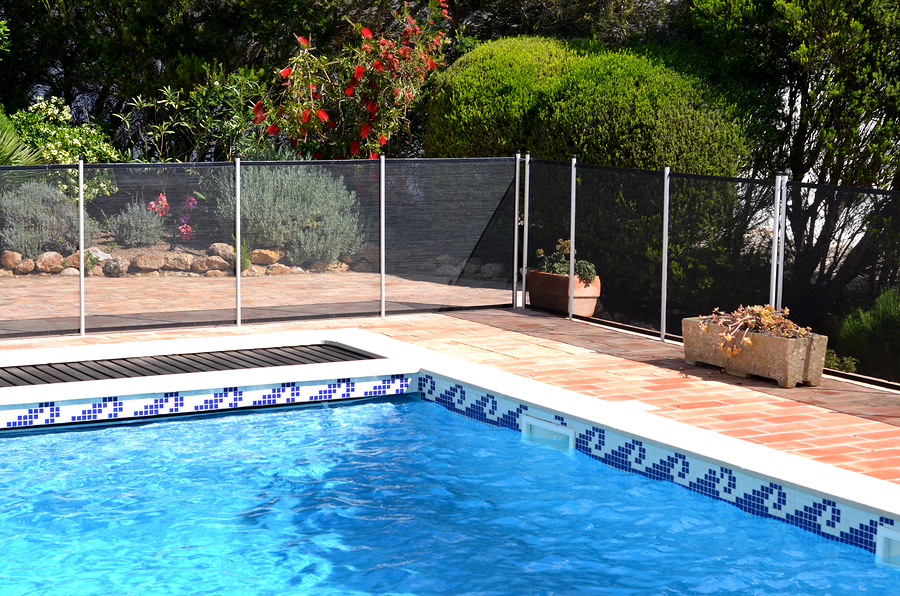Safety should always come first, but that doesn’t mean you don’t want your pool fence to look aesthetically pleasing as well.
Pools are a wonderful addition to every home, especially during the scorching summer months so often associated with the Australian climate. They make for endless fun for kids (and adults) and they’re the perfect way to cool off.
Better still, just like water tables, they’re great for imaginative play and helping develop kids’ fine motor skills. But as fun and exciting as they are, pools are also dangerous, especially if not fenced or cared for correctly.
Why you need a pool fence
In Australia, each state has different laws when it comes to fencing in pools. However, all states and territories agree, without a doubt, that pool fences are necessary. Especially when you consider that drownings in swimming pools occur so frequently, and all too often it’s because of poor fencing.
As such, there are strict pool fencing laws and regulations, outlined in the Australian Standard for Swimming Pool Fencing legislation (AS1936). While some restrictions may seem excessive, the lives of children, pets and even adults are worth every limitation.
Options for pool fences
Regardless of which option you choose, your fencing and gates absolutely must adhere to the Australian standards. This includes:
- No gaps that are wide enough for a toddler to squeeze through
- No climbing footholds
- No more than 100mm ground clearance and at least 1.2m high
- Strong and rigid enough that a child cannot alter the fence in any way
- Made by materials and welds strong enough to withstand a heavy lock
In terms of material options, there are a few on the market.
Aluminum and steel: Made with upright bars joined by an upper and lower rail. There are variations on the style and pattern. Steel fencing is one of the most popular options on the market because it is cost-effective and durable, and it requires little to no maintenance.
Safety glass: Held in place by posts and core-drilled or bolted into concrete. You can choose framed, frameless, semi-frameless or in-ground and there are various patterns and designs to choose from.
Brush fencing: Made from natural brush timber, tightly packed together and supported by beams.
Timber fencing: Made up of timber slats, usually laid horizontally and supported by vertical timber planks.
Colorbond fencing: Tough and iconic, colorbond options are also quite stylish and exceptionally durable. However, it’s best not to use it for the whole fence as it will block out quite a bit of sunlight.
What to consider when deciding
Of course, you want your pool fence to look nice and match the style and functionality of your home. However, besides aesthetics and safety, there are a few other considerations to keep in mind when choosing what kind of pool fence to install.
Your budget
Each pool style will be at a slightly different price point and you need to factor this in when making your ultimate decision. Of course, when considering budget though you also need to analyse the ongoing costs of the fence. Will it need to be replaced sooner if you go for the cheaper option? Make sure to do your research and get some renovation quotes before you start.
Maintenance and repairs
This ties in the budget, as some pool fence options, will require more maintenance and cleaning. While you can obviously do the cleaning, there may be some maintenance required that you cannot do yourself, meaning you’ll have to get an expert in to ensure the repairs meet the safety standards and are conducted correctly. Cleaning, of course, can also be a hassle.
Quality and durability
As with most things in life, quality and durability will change depending on the material. While most expensive doesn’t always equate with the best quality, it’s best not to go with something too cheap. You want something that is quality-made, using good materials and will withstand the test of time, weather and use.
Final remarks
The position of your pool and the area around it may just make your decision for you like some styles of pool fencing is more adaptable to different shapes than others. In addition, the position of your home will also be a mitigating factor.
If you live near the coast and are subjected to ocean-winds, then don’t get something that will rust from the salt spray. If your pool is in an area with little to no shade, don’t get something that will fade in the sun, otherwise, this will require more upkeep.
Finally, consider the space between the pool itself and the fence. Remember, installing a pool fence is not a choice, it’s a requirement. What kind of pool fence you choose though, that’s entirely up to you.


